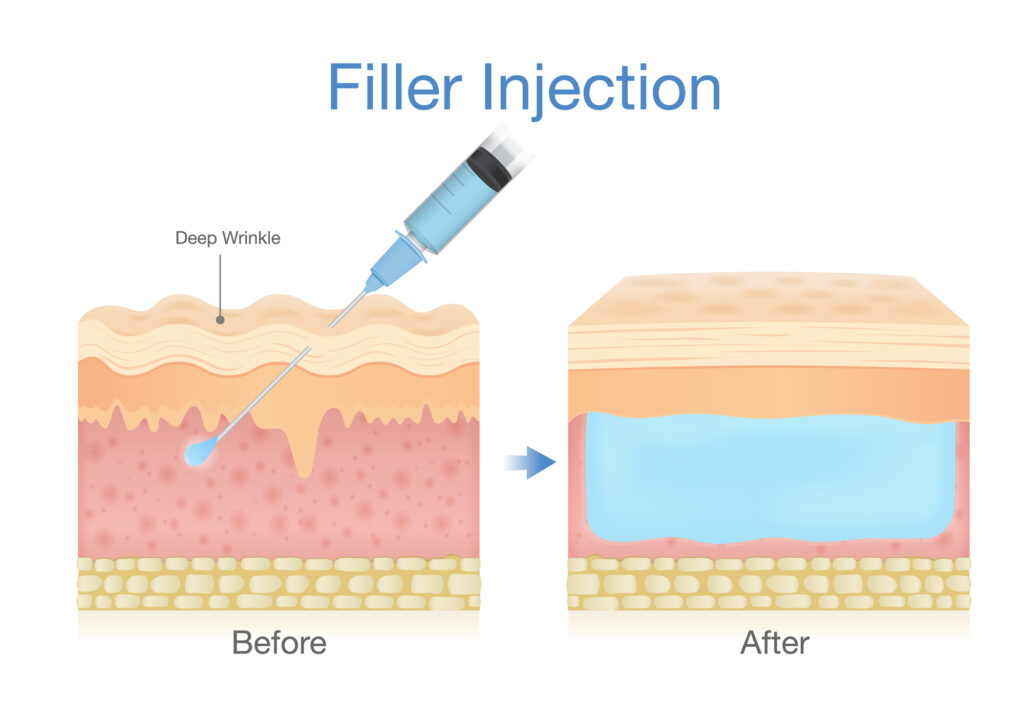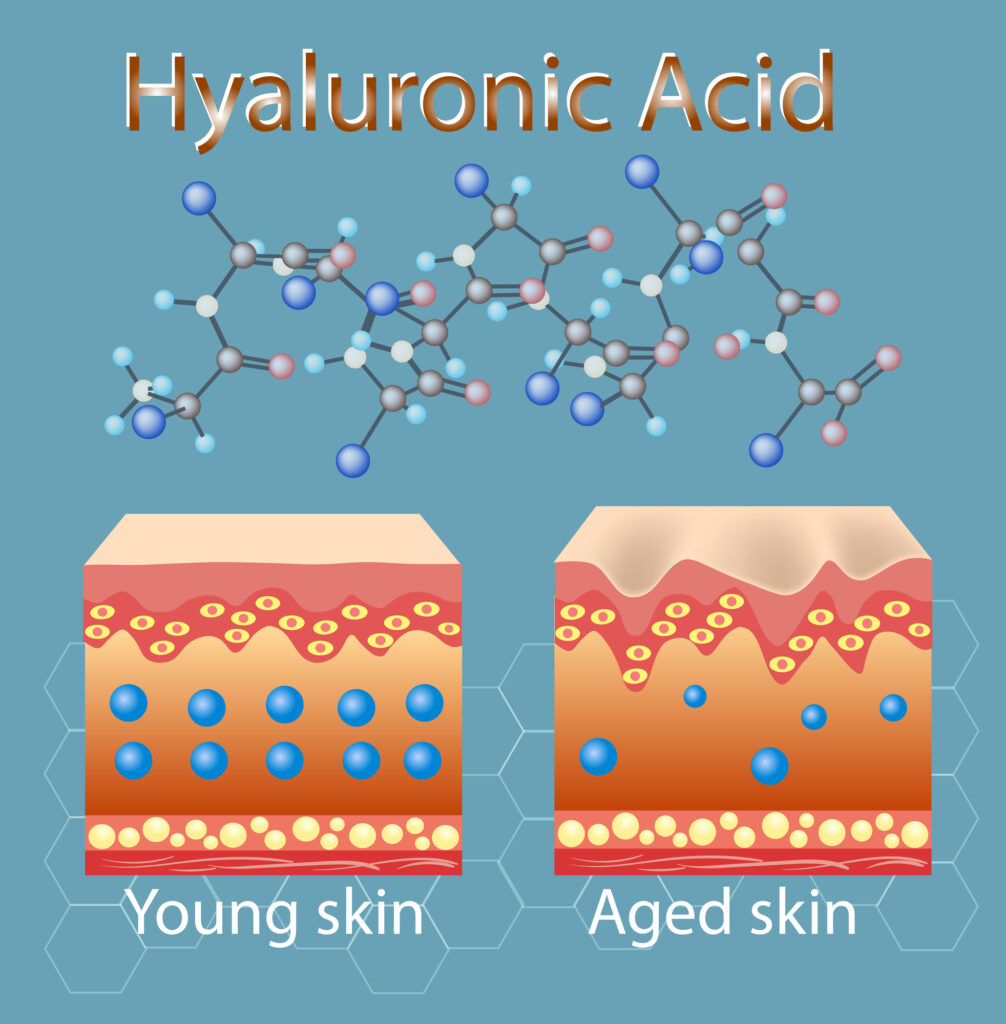
Dermal fillers are a great option for people who want to rejuvenate their face, decrease the look of wrinkles, and add volume.
There are a lot of different kinds of cosmetic procedures. For individuals looking to revitalize their facial features, reduce the appearance of wrinkles, and restore volume, dermal fillers are an appealing choice in this scenario. Various dermal fillers are available on the market today. This article aims to explain each type of filler, how it works, and its advantages.
Various types of facial fillers exist; what are they?
- Various Dermal Filler Options
There are many dermal fillers, each ideal for a specific facial region and having advantages and uses. Some of the most famous types of fillers include hyaluronic acid, calcium hydroxylapatite, poly-L-lactic acid, and polymethyl-methacrylate microspheres.
Different dermal fillers serve different purposes and can address many issues, including shallow to deep wrinkles, hollows, and fine lines.
- The Features and Applications of Each Facial Filler
Each type of facial filler serves a unique purpose and has distinctive characteristics. Hyaluronic acid fillers are common when dealing with moderate-to-severe creases and folds on the face, like the “parentheses lines” around the mouth. Calcium hydroxylapatite is the treatment of choice for places like marionette lines that have experienced significant volume loss. Polymethyl-methacrylate microspheres and poly-L-lactic acid filler are long-term anti-aging treatments that work by helping the body make more collagen.
To What Extent Are Dermal Fillers Effective?
- Injectable Dermal Fillers: The Science Behind It
To restore a younger look and diminish the appearance of deep wrinkles, injectable dermal fillers plump up the face tissue. Dermal fillers smooth out wrinkles and fine lines by injecting a substance into the skin.
- The Procedure For Using Facial Fillers To Restore Volume
Injecting the chosen filler into specific areas of the face is the method for restoring volume using facial fillers. To choose the most appropriate filler type and injection site, the injector—often a medical professional—observes the patient’s facial expressions. To achieve a specific look, fillers do more than just add volume; they also shape and contour the face.
- How Fillers Stimulate the Production of Collagen
Various fillers stimulate the skin’s inherent collagen synthesis. With aging, skin elasticity diminishes. However, leveraging natural collagen through filler injections triggers collagen production, revitalizing the skin for a youthful appearance by enhancing elasticity and suppleness.
Which ingredients make up dermal fillers?
- Knowing what hyaluronic acid, polymethyl methacrylate microspheres, and calcium hydroxylapatite are and how to evaluate them
Because of its naturally occurring moisturizing qualities and widespread usage in the body, hyaluronic acid is a popular ingredient in dermal fillers. One component of bones is calcium hydroxylapatite, which is a gel-like substance. Polymethyl-methacrylate microspheres are a biocompatible synthetic material that provides long-term wrinkle therapy.
- Knowing These Ingredients’ Function in Fillers
These filler’s active ingredients help moisturize, plump up, and encourage the skin’s natural synthesis of collagen, giving the appearance of smoother, fuller skin. Hyaluronic acid moisturizes the skin, calcium hydroxylapatite adds volume right away, and polymethyl-methacrylate microspheres treat deeper wrinkles and folds in a way that lasts for a while.
- Safe Filler Use: FDA-Approved Substances
FDA-approved active substances in filler injections are deemed safe under skilled administration. Discussing benefits with the injector before treatment ensures informed decision-making, prioritizing safety and efficacy for individuals seeking topical application of these substances.

As people age, their faces lose some of their youthful volume, which leads to wrinkles and drooping skin.
What Benefits Can Dermal Fillers Provide?
- The Advantages of Different Dermal Filler Types for Cosmetic Uses
Cosmetic benefits of facial fillers include plumping lips, enhancing face contours, restoring lost volume, and smoothing facial wrinkles. Additionally, they smooth out the skin’s texture, which lessens the visibility of acne scars.
- How Fillers Help to Contour Facial Structure and Restore Volume
Wrinkles and sagging skin result from the face losing its youthful volume as people age. Fillers are essential for shaping the facial structure and giving the face a youthful appearance to restore lost volume.
- Reducing Deep Wrinkles and Acne Scars
Injectable fillers are an excellent solution for severe wrinkles and acne scars. These fillers can make these flaws look far less noticeable by enhancing the skin’s volume from the inside out. The skin becomes softer and looks younger as a result.
Cost Estimate and Scheduling for Filler Consultation
The type and quantity of filler, the area to be treated, and the injector’s skill level affect how much you spend on dermal fillers. It’s best to consult a board-certified medical professional to get an accurate estimate.
How long do dermal fillers typically last?
Dermal filler injections offer varying durations of effectiveness, contingent upon the filler type. Hyaluronic acid fillers typically last six months to a year, while polymethyl-methacrylate microspheres can endure up to five years, providing individuals with diverse options for long-term aesthetic enhancements.
Post-Injection Expectation: Recovery Time and Outcomes
Swelling and bruising after filler injections are common but should go down within a few days. There is minimal downtime, and most people can return to normal routines. A renewed and younger appearance might be yours in a flash or over time.




